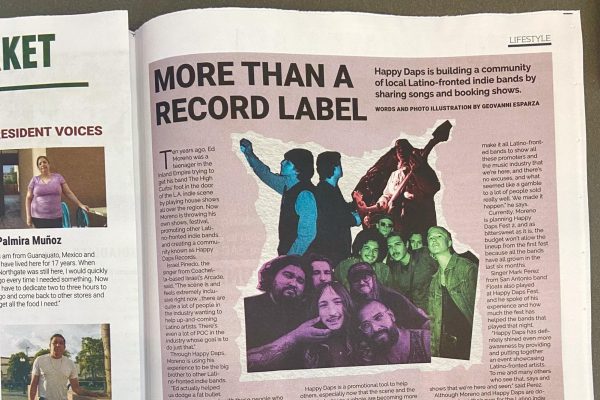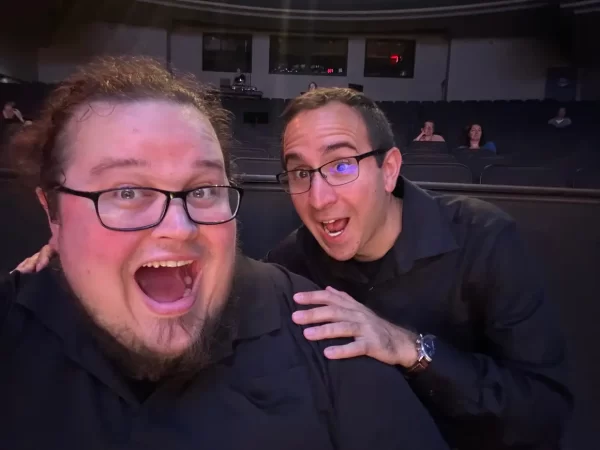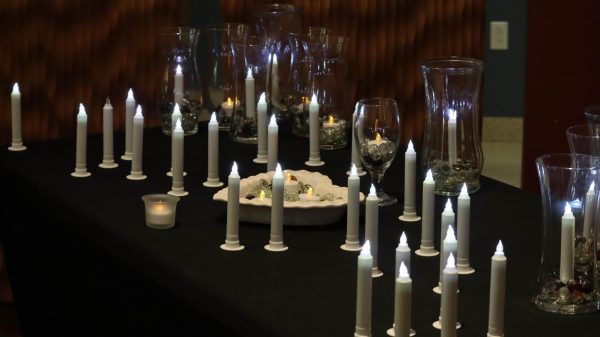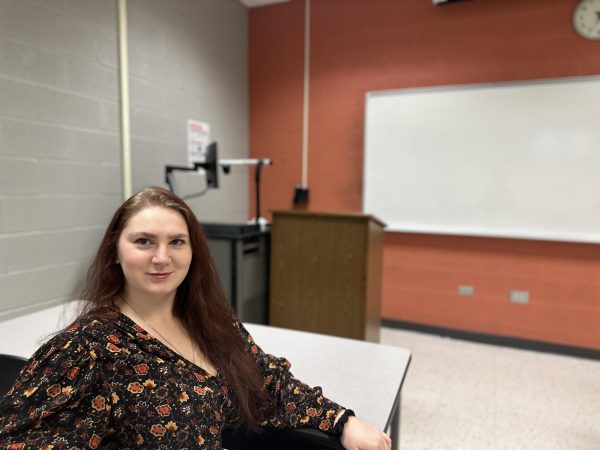The echo of shots fired: how a theater production on the Columbine shooting is more than a reenactment
On April 20, 1999, two high schoolers murdered 13 people including 12 students and one teacher, before both committing suicide at Columbine High School. Now, just over 20 years later, Elgin Community College is putting on the production, Columbinus, written by Stephen Karam and PJ Paparelli. It’s a dramatized retelling of the events with a cast of 15 students.
Gun violence is a sensitive and pressing issue that is not being circumvented by ECC’s Assistant Professor of Theater Susan Robinson, who sees the production as a mode of expanding the minds of the viewers and instigating reform.
“I believe theater can change the world,” Robinson said. “We pick social issues that are sometimes uncomfortable for us to hear and see, but ultimately encourage discussion and thought. For me if the audience sees someone else’s perspective, that is the key to how we’re going to change things in the world.”
Posters around the school advertise for the opening night on Nov. 8, and following performances, eventually ending on Nov. 17. The poster additionally provides information in the form of a content warning reading:
“Columbinus includes simulated firearm sound effects, guns, violence, hate speech, sexual content, self-harm, and death. This production is not recommended for sensitive viewers or anyone under the age of 13.”
The United States Theater Project started work on Columbinus in 2002 by gathering journals, letters and videos, along with conducting hundreds of interviews and in 2005 the play went on Broadway.
“It is a heavy subject; the play doesn’t sugar coat it…these were real situations,” Robinson said.
The play is unique in that the majority of the cast remains nameless and embodies merely a generic cliched archetype including ‘Perfect’, ‘Jock’, ‘Prep’, ‘Faith’, and more. Nikki Macey, a 3rd-year student at ECC pursuing an Associate’s in Arts, is playing the part of ‘Rebel’.
“The way that these roles are different is [that] you’re not as much a character as just a stereotype of a normal highschooler,” Macey said. “You have to kind of make up the character in a way except for ‘Loner’ and ‘Freak’… but the rest of us don’t have a backstory or an outside life. In other shows you know how you got your personality whereas in this show you only have the personality.”
This avoidance of the presentation of actors as specific people is not done carelessly. It is very intentionally executed to convey a strong sense of theatrical spirit. The goal is to remind the audience that the performance is not an attempt to recreate the incident precisely.
“It’s more symbolic than a reenactment,” Macey said. “We want to show that this is a show and not a glorification.”
‘Loner’ and ‘Freak’ are representative of Dylan Klebold and Eric Harris respectively: the two responsible for the Columbine shooting. Jonathan Fonseca, a 3rd-year student pursuing a degree in marketing at ECC, has been cast as ‘Loner’ and takes the position seriously.
“There is really something here to be done,” Fonseca said. “There is a job to fulfill by telling this story and the more I [think about] it now, I realize it’s a really daunting task.”
After each performance, there will be a grief counselor available for people to speak with and a ‘talk-back’ will be held. A ‘talk-back’ is a facilitated discussion with experts, administration and cast members that allows the audience to participate and voice questions and concerns.
“As I’ve told my colleagues…they have, almost all across the board, wanted to get involved,” Robinson said. “They see this is an opportunity for us to discuss, for us to come together as a community and figure out a plan of action for more education and support.”
After 20 years, the Columbine shooting has not been forgotten and people still struggle with some very difficult questions.
“As we start these discussions, it is as a group,” Fonseca said. “[ I hope] as people leave and drive home, maybe they will think that we can get to the bottom of these things with the help of each other.”
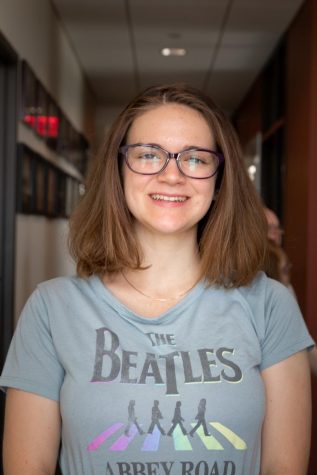
This is my second year at ECC and I joined The Observer to meet new people and learn more about the school and community. In my free time I enjoy reading,...



